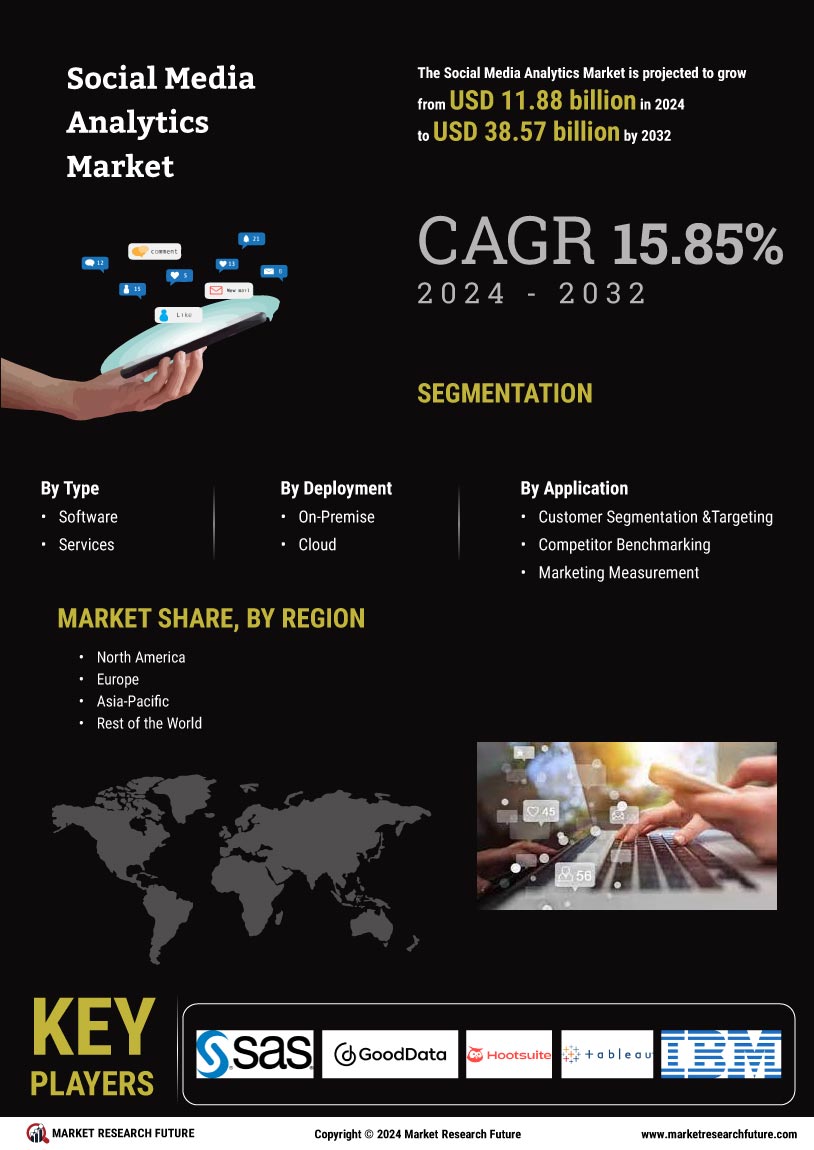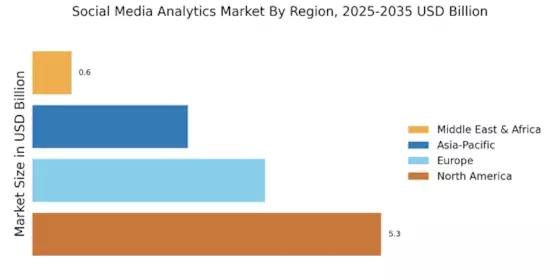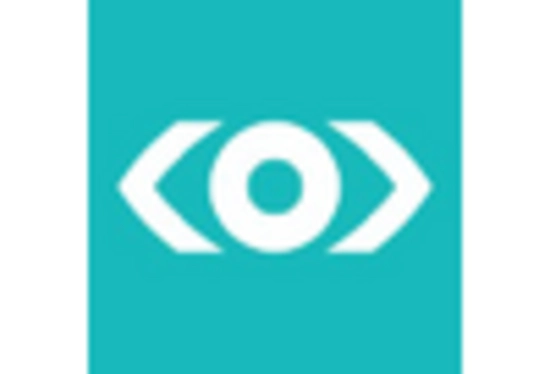Increased Social Media Usage
The proliferation of social media platforms has led to an exponential increase in user engagement, which serves as a significant driver for the Social Media Analytics Market. With billions of users actively participating on platforms such as Facebook, Twitter, and Instagram, the volume of data generated is staggering. Recent estimates suggest that over 3.6 billion people are using social media worldwide, a figure projected to grow to nearly 4.41 billion by 2025. This surge in user activity creates a wealth of data that organizations can analyze to understand trends, sentiments, and customer preferences. Consequently, the demand for analytics tools that can process and interpret this data is likely to escalate, further propelling the Social Media Analytics Market.
Focus on Brand Reputation Management
In an era where brand reputation can be significantly impacted by social media interactions, the need for effective reputation management tools is becoming increasingly critical. The Social Media Analytics Market is witnessing growth as businesses seek to monitor and manage their online presence. Companies are investing in analytics solutions to track mentions, sentiments, and overall brand perception across various platforms. Research indicates that 78% of consumers trust online reviews as much as personal recommendations, underscoring the importance of maintaining a positive brand image. As organizations strive to protect their reputations, the demand for social media analytics tools that provide real-time insights into public perception is likely to rise, driving the market forward.
Integration of Social Media with E-Commerce
The integration of social media platforms with e-commerce functionalities is emerging as a pivotal driver for the Social Media Analytics Market. As businesses increasingly utilize social media for direct sales and customer engagement, the need for analytics tools that can track performance and consumer behavior becomes paramount. Recent data suggests that social media influences over 50% of online purchases, highlighting its role in the consumer decision-making process. This trend indicates that companies are not only using social media for marketing but also as a sales channel. Consequently, the demand for analytics solutions that can provide insights into customer interactions and sales performance on social media is likely to grow, further enhancing the Social Media Analytics Market.
Growing Demand for Data-Driven Decision Making
The increasing emphasis on data-driven decision making is a primary driver for the Social Media Analytics Market. Organizations are increasingly recognizing the value of insights derived from social media data to inform their strategies. According to recent statistics, approximately 70% of businesses are now leveraging social media analytics to enhance their marketing efforts. This trend indicates a shift towards a more analytical approach, where companies utilize data to understand consumer behavior and preferences. As a result, the demand for sophisticated analytics tools is likely to rise, pushing the Social Media Analytics Market to expand further. Companies that effectively harness these insights can gain a competitive edge, thereby fueling the growth of this market.
Regulatory Compliance and Data Privacy Concerns
As data privacy regulations become more stringent, organizations are increasingly focusing on compliance, which serves as a significant driver for the Social Media Analytics Market. Companies must navigate complex regulations such as the General Data Protection Regulation (GDPR) and the California Consumer Privacy Act (CCPA) while utilizing social media data. This necessity creates a demand for analytics tools that not only provide insights but also ensure compliance with legal standards. Organizations are seeking solutions that can help them manage data responsibly while still extracting valuable insights from social media interactions. As the landscape of data privacy continues to evolve, the Social Media Analytics Market is likely to see growth in tools that prioritize compliance and ethical data usage.


















Leave a Comment